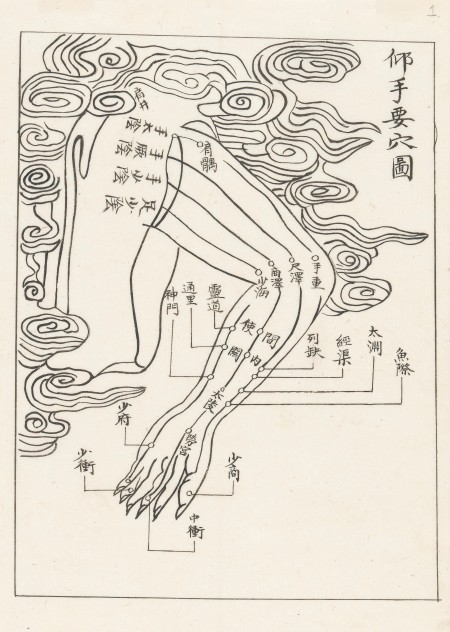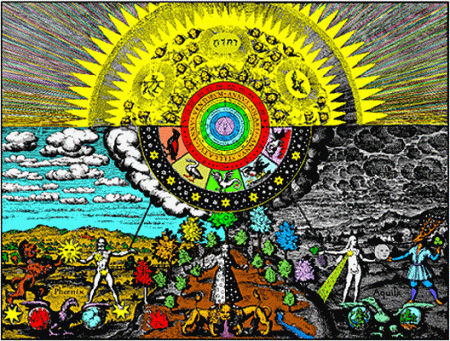
Two red and Green Macaws, also known as Green Winged Macaws, (Ara chloropterus) Manu National Park, Peru. Bill Boulton, Creative Commons.
I’ve followed Charlie Hamilton James’s work with particular interest because, like me, he adores Kingfishers. What I hadn’t known was that, although our life paths and perspectives have been very different, he too was drawn to the bird around a time of bereavement. In Kingfisher, Tales from the Halcyon River, he tells us that, aged six, he drew a picture of a kingfisher for his teacher, without knowing what the bird was called.(1) In his recent television series ‘I Bought a Rainforest’, we learned that his obsession with other-than-human animals began when he was seven, shortly after his father died. Mistrusting human relationship he escaped into wildlife. When he was thirteen he was given his father’s old Nikkormat EL, and at fourteen would skip school to watch kingfishers, changing out of his school uniform on the bus and spending all day by the river. When he was fifteen he left school to photograph them, and now lives in an old mill-worker’s cottage beside the river where he spent his youth.
I Bought a Rainforest followed Charlie to a 100 acre patch of rainforest in Peru that he’d bought, for £6,000, because a friend had told him that conservationists were anxious to prevent the area being used as a route into the Manu National Park, reportedly the most biodiverse place on earth. It is home, for instance, to 10,000 bird species -10 percent of the world’s species! We were told that, in Peru alone, over the past twenty years more than five and a half million acres of rainforest have been destroyed (more than 700 acres a day) to make way for crops, cattle, timber, and gold. The rainforest had, however, somehow slipped from public view, at least in the over-developed world.
Back in September 1988 an astronaut photographed a greenhouse gas smoke cloud the size of India stretching unbroken from the Andes to the Atlantic. During that year’s burning season fires glowed from more than 8,000 points across Amazonia. In December that year, Chico Mendes, rubber tapper, trade unionist, and pragmatic non-violent activist, was gunned down shortly after his forty-fourth birthday. He had linked local land rights with global forces, and, understanding that human communities are part of any ecosystem, influentially proposed sustainable extractive reserves. Between 1964 and 1988 there had been 982 killings of union and land rights organisers, yet he had refused to leave Amazonia when shots were being fired at his union headquaters. The story of his legacy is told in Andrew Revkin’s The Burning Season.(2)
At the outset Charlie Hamilton James seemed to be blundering into a situation where he would, at best, be horribly out of his depth. He appeared surprised to discover that his patch of rainforest was degraded and being used as a coca plantation. About the only wildlife in evidence was ‘a stunningly clear stream visited by darting kingfishers’. That was a good sign, surely, though? Germaine Greer, who was persuaded to purchase a larger and much more expensive piece of degraded rainforest in Australia by a resplendant Regent bowerbird, Sericulus chrysocephalus, who came close and danced for her, realised that this was the forest speaking to her.(3) I don’t know whether, at that stage, Charlie made the connection.
What unfolded was a compelling human drama. When told by Elias, the illegal logger, that he was only cutting down trees to feed and clothe his severely disabled daughter, Charlie Hamilton James was sceptical. “I felt pretty stupid the next day, when I went to Elias’s house, a small shack surrounded by filthy water and sewage, and met his daughter. Heydi had fallen in a rice-threshing machine as a baby and suffered permanent brain damage. At five, she had limited motor skills and was unable to speak; her mother Innes was mocked by other women, who told her she must have drunk too much when she was pregnant.”(4)
The apparently inexaustible Hamilton James then set out to try to understand what life was like for people in the area by working alongside gold miners, and then, across the border in Brazil, cattle ranchers who were burning new areas of forest. In the process he called in ecologists to survey the impressive community of species living in a single huge Mahogany Tree. Having previously specialised in wildlife photography -his images of forest creatures are impressive- he began to photograph people. Human people, that is!
Then, in the third episode, he visited Don Alberto, a Wacheperi ‘shaman’, who introduced him to Ayahusaca, ‘a master plant that teaches us the use of other plants’ and ‘opens the mind to the energies flowing through nature’. Despite acknowledging the importance of rainforest plants for Western medicine, Charlie, who is no polite anthropologist, intially dismissed this as ‘a load of old bolllocks’ and ‘wanted some proof’. Don Alberto gave him some Ayahuasca, in an infusion of twelve forest plants, and told him that the forest spirits would come to him in a dream and show him his true path. Through the ‘hallucination’ (sic) the forest would speak to him. The shaman then chanted to the steady beat of a rattle as Charlie saw visions of many animals, ‘snakes, wasps, spiders, crocodiles’, but only the forest species gave him messages. Afterwards he said that he had hoped to learn about the forest ‘but, irritatingly, it was about me’.
“Whatever he did, it worked. It really worked … the understanding of myself, and being given this understanding by the creatures of the forest was the most enlightening and profound experience I’ve ever had. It absolutely blew me away”. He now had some sense of Don Alberto’s ‘world that cannot (normally) be seen’. No wonder he wanted to cry when he heard the Screaming pea-hen, ‘that crappy little brown bird’ (!), the classic sound of the rainforest, in an area of forest that was about to be torched.
Fortunately Charlie Hamilton James came to realise that local people are the solution. There was some moving footage of him planting a mahogany sapling with Elias and his daughter. He now employs Elias to restore the forest and the small tract he had bought has been taken on by the CREES foundation, who support local people with agro-forestry advice. An ecologist from the foundation made it clear that wealthy individuals buying bits of rainforest was not the answer. Local community owned solutions were needed.
‘I Bought a Rainforest‘ usefully raised the profile of rainforest conservation, but given that its presenter was a specialist wildllife filmaker and photographer, rather than an investigative journalist or political commentator, and that critical commentary is rarely permitted on t.v, there were inevitable ommissions. Charlie Hamilton James’s conclusion that all the allegedly dangerous ‘bastards’ he’d met turned out to be decent folk whose only option in the face of desperate poverty was to destroy the rainforest, though interesting and valid as far as it went, obscured a far from benign history. The B.B.C.’s Natural History Unit is not known as a beacon of progressive politics, so the absence of authoritative local/indigenous voices in these films was par for the course. What we did get, though, were links to an Open University website giving more detail of the background issues, and to a crowdfunding initiative that has helped the CREES foundation exceed their fundraising goal for further community development work.
The historical context of colonisation of the Amazon is, of course, a desperately bleak story. On the Open university site (here) Dr Andrea Berardi writes that by the 19th century, the dispossession of Amerindians was almost complete. With the loss of their ancestral lands to which their culture was intimately related, the few communities that had survived faced another sort of extinction.
“The process of colonization has left so-called indigenous peoples defeated, relegated to minor spaces, reservations, bread-crumbs of land conceded by the dominant society. Indians were separated from their sacred land, the land of their ancestors, and from their burial grounds with which they shared a deeply spiritual bond. Deprived of traditional environments, they were not only politically, but economically, culturally, and religiously dispossessed” (Wiessner, 1999:58-59)
In Brazillian Amazonia the impact of European colonization reduced a population of several millions to a present day total of between 180,000 and 350,000. Many of the ‘uncontacted’ tribes may be communities traumatised by previous colonisation who have retreated deeper into the forest. Survival International’s 2014 Annual Report refers to a history of genocidal violence -mass murder, torture, bacteriological warfare- slavery, and racism, in the mid twentieth century. This was documented in a report (written in the late sixties), which was mysteriously lost in a fire, but has now resurfaced. They find an ‘ongoing climate of impunity’ in Brazil in relation to crimes against Indians, and the theft of ancestral land, and highlight an epidemic of suicide, and continuing attacks by hired gunmen.
Sue Branford, a respected green/left commentator on Latin American affairs, who, unsurprisingly, I’ve never seen on television, has recently reported on ‘Seeds of the Forest’ a sustainable community project set up by a nun, Sister Angela Sauzen, in Brazil. Sister Sauzen has had a gun held to her head, and knows that another nun, who established a similar project further along the Transamazonica highway, was killed in 2005.
last October Sue Branford also reported from Santarém in Brazil on a sham public consultation meeting about a hydro-electric dam project, quoting an open letter published by Survival International in which Munduruku leaders described the proposed dam site in the following terms: “The Cachoeira de Sete Quedas (Paribixexe) are beautiful falls, containing seven stages in the shape of steps. It is where the dead live, the sky of the dead, in other words, the reign of the dead. It is a sacred place to the Munduruku, Kayabi and Apiaká, where the fish procreate, where the mother of fish exists. On the rock face there is art left by the Muraycoko (father of writing), the writing left for the Munduruku through the surabudodot writings, in a very remote period. There are also funerary urns buried there, where our ancient warriors are buried. A portal also exists there which cannot be seen by common men, only by spiritual shaman leaders, who can travel to another unknown world without being seen.” The site has now been destroyed.
Charlie Hamilton James may have been lucky that he went to Peru rather than Brazil. I don’t know, but I’m glad he made ‘I Bought a Rainforest’and look forward to seeing his work moving in a more journalistic direction.
Brian Taylor 14/7/14.
Sources:
(1) Charlie Hamilton James, Kingfisher, Tales from the Halcyon River, Evans Mitchell, 2009.
(2) Andrew Revkin, The Burning Season, The Murder of Chico Mendes and the Fight for the Amazon. Houghton Mifflin, 1990/Shearwater, 2004.
(3) Germaine Greer, White Beech, The Rainforest Years. Bloomsbury, 2014.
(4) Charlie Hamilton James, I Tried to Save a Patch of the Amazon but I’d Bought an Illegal Cocaine Plantation, Observer, 16th March 2014.
Video clips on BBC I-Player I Bought A Rainforest page.
Digital Rainforest site.
Charlie Hamilton James, The Rainforest and Me, in Pictures, Guardian, march 2014.
Charlie Hamilton James’s Website.
Seigfried Wiessner, Rights and Status of Indigenous Peoples: a Global Comparative and International Legal Analysis, 1999.
Sue Branford, Lula’s Last Challenge, The Amazon, Open Democracy, 9/12/09.
Sue Branford, Tapajos, Public Consultation? More of a P.R. Excercise? , Latin America Bureaux, Latin America Inside Out Blog, Amazon Journey 2013. 4/10/13.
Sue Branford, Brazil’s Amazon Conservation Project Threatened by Loggers and Landowners, Guardian, 7/1/14.
Survival International, and their Annual Report 2013.
The Rainforest Alliance’s Peruvian Amazon Partner wins environmental award.

















